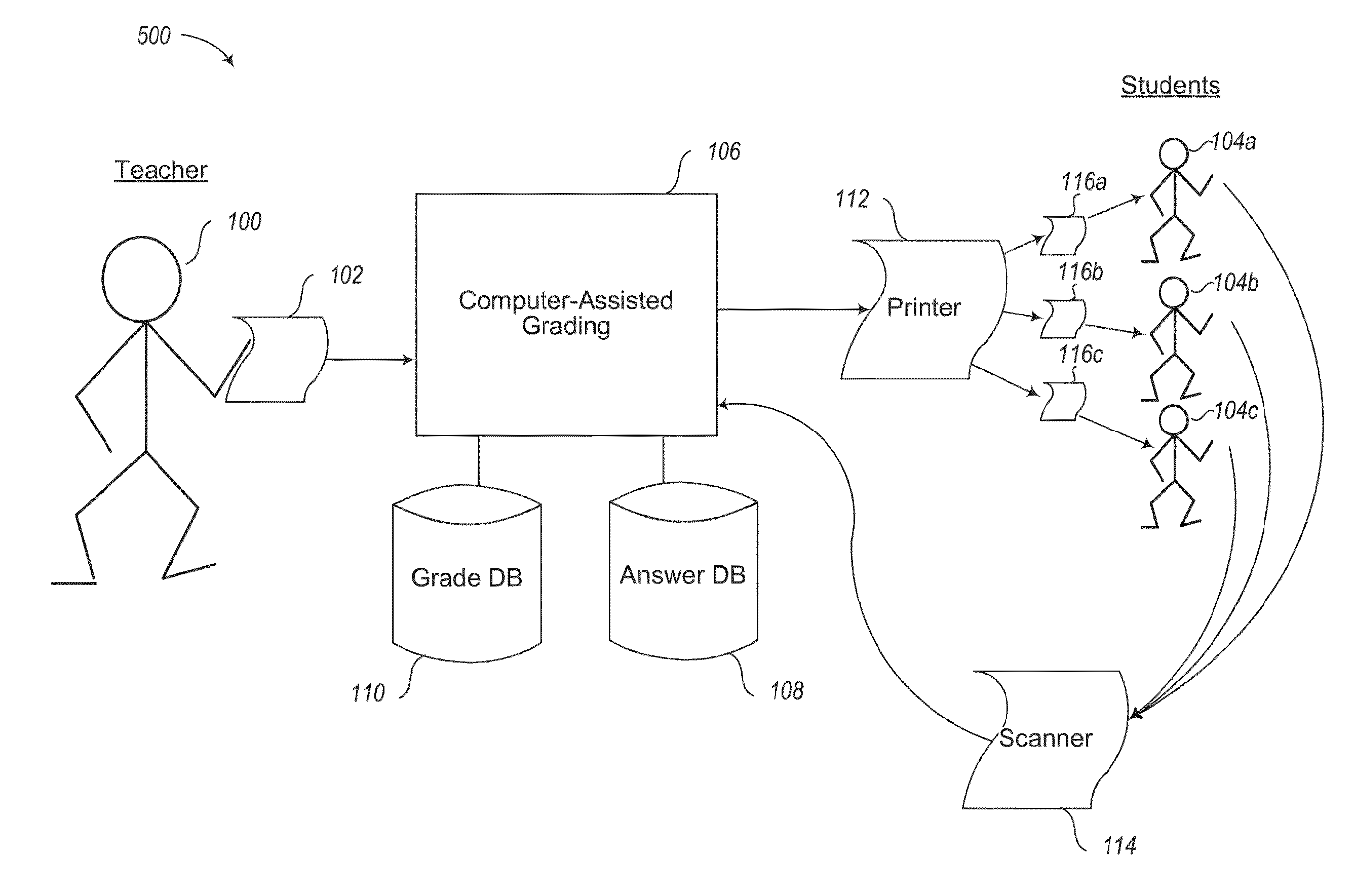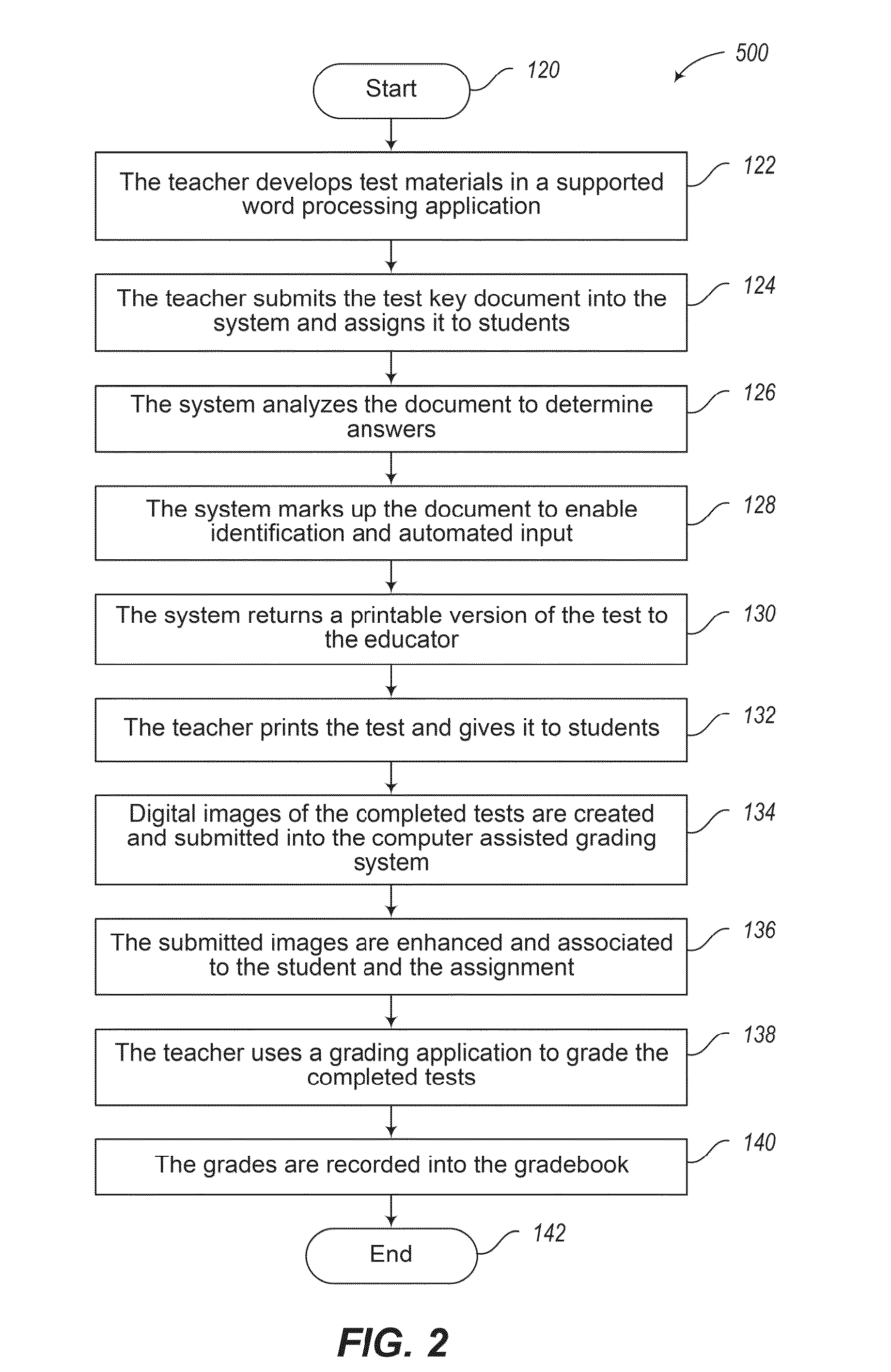Systems and methods for computer-assisted grading of printed tests
a technology of computer-aided grading and printed tests, applied in the field of tests, can solve the problems of inability to achieve, time-consuming and labor-intensive if done, and achieve the effect of very quick and efficient grading
- Summary
- Abstract
- Description
- Claims
- Application Information
AI Technical Summary
Benefits of technology
Problems solved by technology
Method used
Image
Examples
Embodiment Construction
[0046]FIG. 1 shows diagram 500 that is one implementation of a system to implement the computer-assisted grading of printed tests. A teacher 100 develops a test key 102 to give to students 104a-104c, for example to evaluate their knowledge of one or more subjects in response to being taught the subjects. The test key 102 may consist of one or more test questions that also include a list of possible answers for the student to select, empty spaces for the student to write in short answers, empty spaces for the student to write essay answers, and areas to indicate true false selections. In some implementations, the test key 102 is written on one or more pieces of paper, whereas in other implementations the test key 102 may be in an electronic representation such as a Microsoft Word™ document file.
[0047]In other implementations, teachers may have only a hard copy of their tests. In this case, the hard copy can be scanned and loaded into the system. The system then presents the pages to ...
PUM
 Login to View More
Login to View More Abstract
Description
Claims
Application Information
 Login to View More
Login to View More - R&D
- Intellectual Property
- Life Sciences
- Materials
- Tech Scout
- Unparalleled Data Quality
- Higher Quality Content
- 60% Fewer Hallucinations
Browse by: Latest US Patents, China's latest patents, Technical Efficacy Thesaurus, Application Domain, Technology Topic, Popular Technical Reports.
© 2025 PatSnap. All rights reserved.Legal|Privacy policy|Modern Slavery Act Transparency Statement|Sitemap|About US| Contact US: help@patsnap.com



